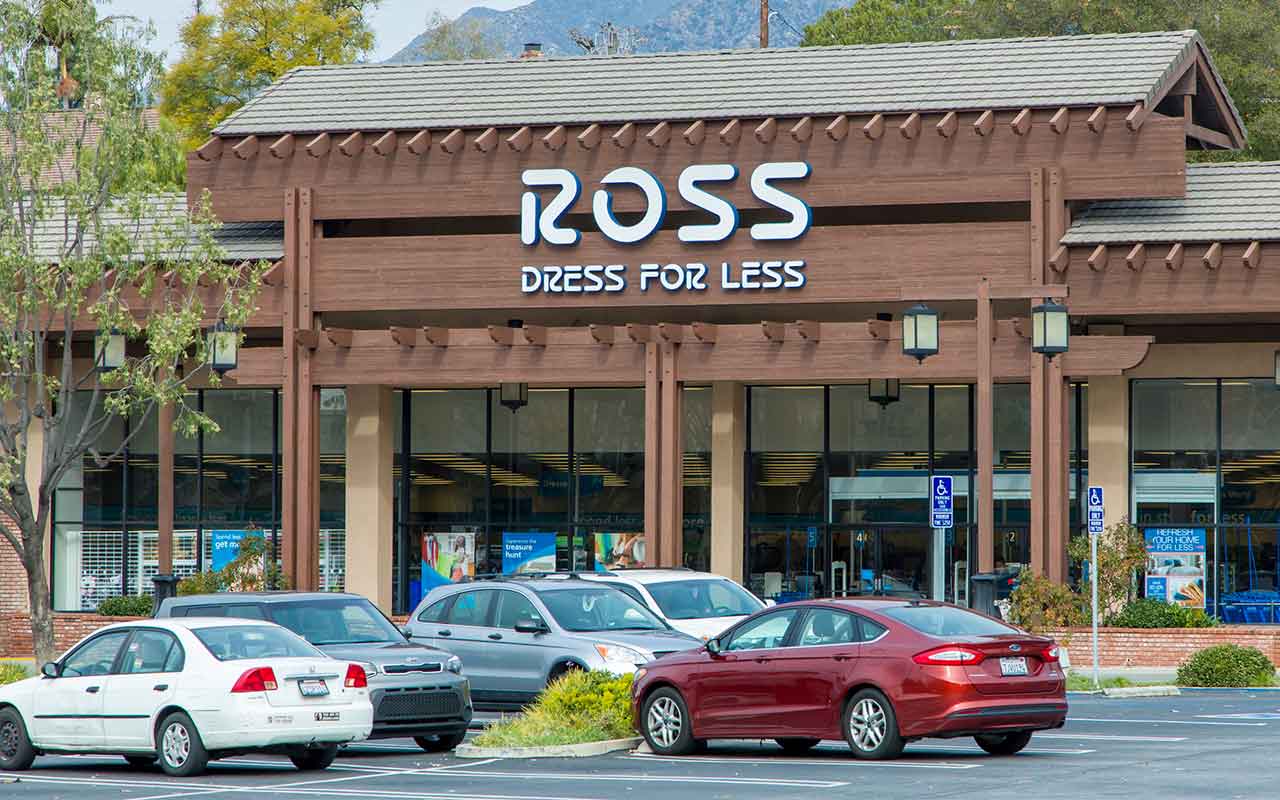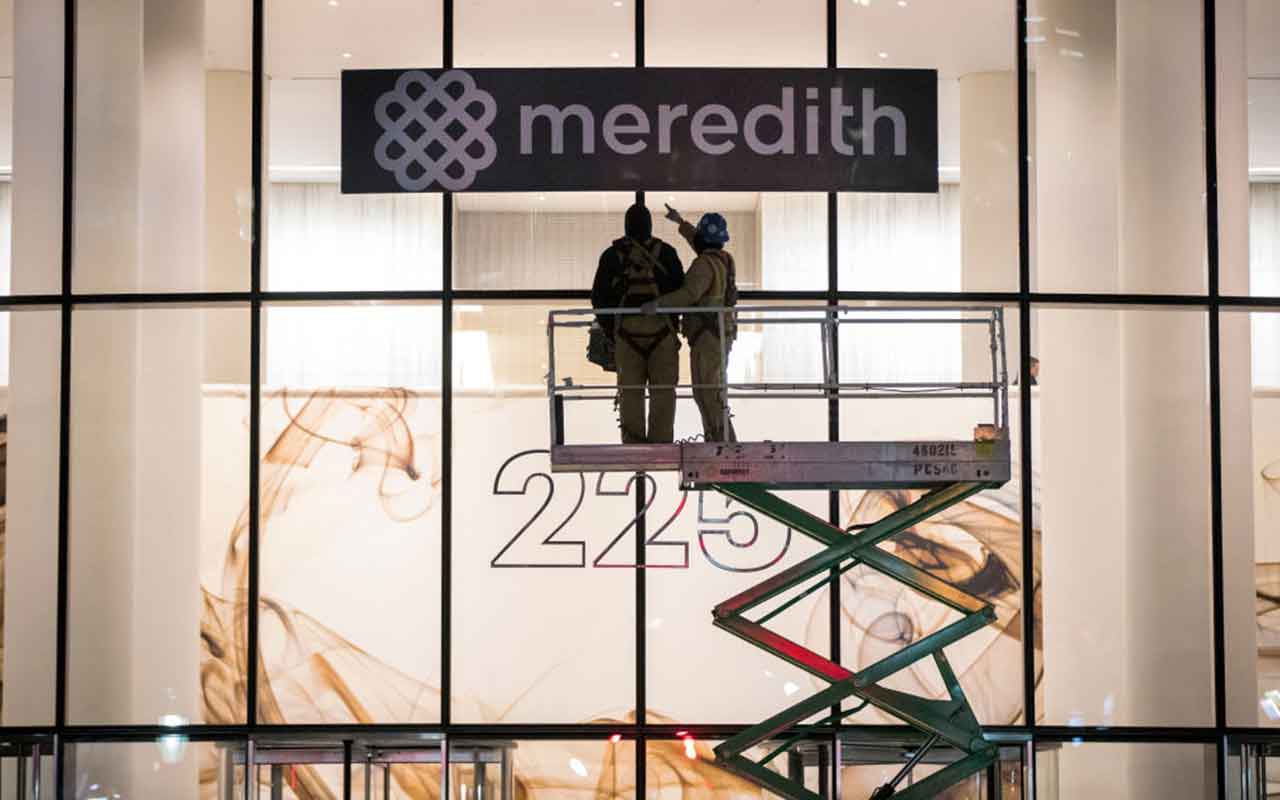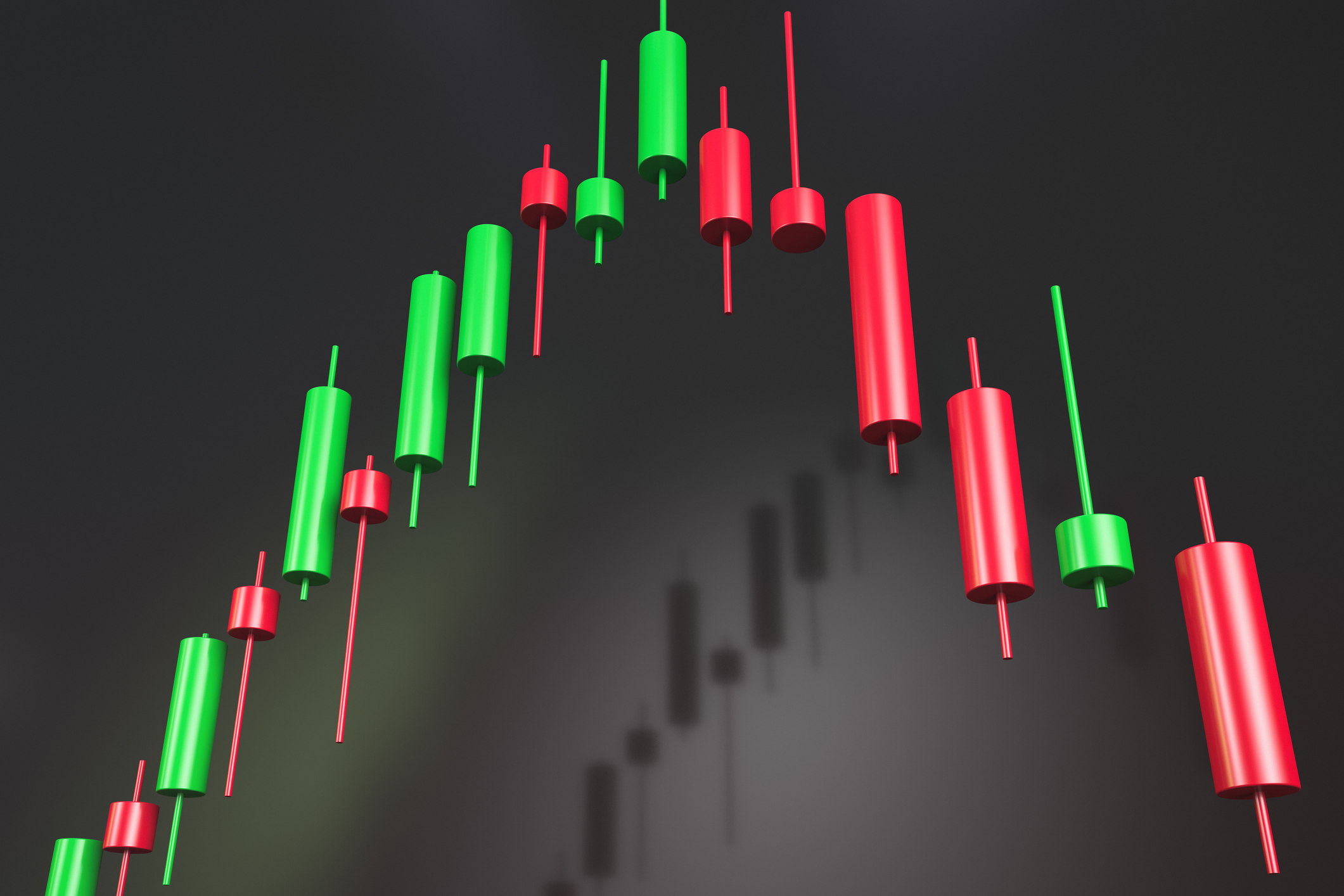11 Dividend Growth Stocks Flying Under the Radar (For Now)
Stocks that generate consistently rising dividends bolster retirement accounts by providing income that keeps pace with inflation.


Stocks that generate consistently rising dividends bolster retirement accounts by providing income that keeps pace with inflation. A group of high-quality dividend stocks known as Dividend Aristocrats have delivered on the promise of reliable income growth for quite some time.
The most commonly known group of Aristocrats are the S&P 500 Dividend Aristocrats – Standard & Poor’s 500-stock index components that have produced at least 25 consecutive years of annual distribution increases.
Dividend Aristocrats offer other benefits, too. Dividend Aristocrats often boast steady financial performance, making them less risky than other equities. The S&P 500 Dividend Aristocrats also have outperformed the S&P 500 over time – by almost 2 percentage points annually on average over the past decade. Much of that outperformance comes during market downturns, making them great stocks for riding out periods of turbulence.
This reliability comes at a cost. Many Dividend Aristocrats have become overcrowded, trading at premium prices and depressed yields. But investors have another way to capture steadily rising dividends at a more affordable price: Identify companies that are close to joining the Aristocracy – they still boast decades of dividend growth, but haven’t grabbed Wall Street’s attention quite yet.
Here are 11 high-quality dividend stocks that aren’t quite yet S&P 500 Dividend Aristocrats – but could be given a little more time. Some of these are S&P 500 companies that are within a few years of the 25-year benchmark. Others are smaller stocks that are near, at or even past the 25-year mark, but must ascend to the ranks of the S&P 500 to qualify.
Disclaimer
Data is as of April 4. Dividend yields are calculated by annualizing the most recent quarterly payout and dividing by the share price.

C.H. Robinson Worldwide
- Market value: $12.3 billion
- Years of dividend growth: 21
- Dividend yield: 2.3%
- C.H. Robinson Worldwide (CHRW, $89.23) is a global logistics company that’s benefiting from the rise of e-commerce. The company handled approximately 18 million shipments last year and served over 124,000 customers.
Its large, loyal customer base gives Robinson a huge competitive advantage. The company’s top 500 customers account for nearly half of annual sales. Of these, 90% have been shipping with Robinson for more than a decade, and none switched to other carriers last year.
Robinson is investing in its Navisphere technology platform to maintain its competitive edge. This system contains information on over 200,000 companies and enables Robinson to fully automate 50% of Navisphere-powered shipments, resulting in faster delivery times, lower costs and reduced errors.
The company recently strengthened its global freight forwarding business by acquiring Madrid-based freight forwarder Space Cargo Group, which has seven offices in Spain and more than 2,500 customers. Zacks Research analysts believe this deal strengthens Robinson’s foothold in the global airfreight forwarding market, which is forecast to grow 4% annually through 2022.
CHRW’s dividends have expanded by about 8% annually over the past decade – roughly in line with its EPS, which have improved by about 9% annually over the same time period.

The Andersons
- Market value: $1.1 billion
- Years of dividend growth: 22
- Dividend yield: 2.1%
- The Andersons (ANDE, $32.55) is a diversified agricultural conglomerate with businesses in commodity trading, ethanol and plant nutrients processing and railcar leasing. And it’s a top-10 player in each segment.
The Andersons traded 550 million bushels of grain, processed 475 million gallons of ethanol and manufactured more than 2 million tons of specialty plant nutrients in 2018. The railcar leasing fleet consists of 23,000 railcars and helps offset the cyclicality of its agricultural businesses.
The Andersons plans to expand its market presence via acquisitions while developing new, value-added ethanol and plant nutrient products. The company recently expanded its grain trading business by acquiring Lansing Trading Group – a deal that creates $10 million of annual cost synergies through 2020 and is immediately accretive to EPS.
Exposure to commodity price swings has caused the company’s growth in sales and earnings to be erratic over the past half-decade. But the overall trend is rising profits. Meanwhile, ANDE has grown dividends at a nearly 12% annual rate over the past 10 years, yet still maintains a conservative 29% payout ratio.
The Andersons expects to drive steady improvements in financial performance and nearly double EBITDA within three years by increasing the value-added component of its grain and plant nutrition businesses.
Just note that The Andersons will need a little more than continued dividend increases to eventually reach the S&P 500 Dividend Aristocrats – it’ll also need some serious growth. To even be eligible to become an S&P 500 stock, it must reach at least $8.2 billion in unadjusted market capitalization. Nonetheless, ANDE demonstrates many of the same qualities as its larger peers and is closing in on the hallowed 25-year mark.

Expeditors International of Washington
- Market value: $13.5 billion
- Years of dividend growth: 24
- Dividend yield: 1.2%
- Expeditors International (EXPD, $78.35) has provided global transportation and logistics services for more than four decades, operating from 331 locations across 109 countries. It specializes in airfreight and ocean freight consolidation and forwarding, customs brokerage, cargo insurance, time-definite transportation services and customized logistics.
Expeditors generates 45% of its revenues from custom brokerage services, 33% from airfreight services and 22% from ocean freight services. The biggest chunk of its revenues come from Asia (45%), followed by 37% in the Americas, 16% in Europe and the remainder in the Middle East, Africa and India.
The company launched a next-gen cloud-based shipping platform (Edge Carrier Allocation) in 2018 developed in collaboration with Walmart (WMT). The new system forecasts, plans routes and connects shippers and ocean carriers prior to shipping, enabling optimal and more cost-effective routing.
EXPD has grown the top and bottom lines in four of the past five years, at average annual rates of 6% and 16%, respectively. Last year was particularly strong, with revenues up 18% from 2017 and EPS improving 29% thanks to higher ocean freight and airfreight volume and better cost management. It also boasts a pristine balance sheet with no long-term debt and a healthy cash balance of $900 million.
The dividend is paid semi-annually and has grown at an 8.5% average rate over the past half-decade. Expect another hike in May, when Expeditors typically increases its regular distribution. The company certainly has room, given a modest 25% payout ratio.

NextEra Energy
- Market value: $90.1 billion
- Years of dividend growth: 24
- Dividend yield: 2.6%
- NextEra Energy (NEE, $188.40) is the largest rate-regulated utility in the U.S. The company owns two electric utilities in Florida that together serve some 5.5 million customers. NextEra also owns a non-regulated energy business that has quickly grown to become the world’s largest generator of wind and solar power and a world leader in battery storage.
NextEra is a major beneficiary of shifts away from coal and nuclear as fuels in favor of natural gas, wind and solar. NextEra recently agreed to pay $1.02 billion for wind and solar renewable-energy projects that doubles the size of its renewable-assets portfolio.
Profits and dividends have grown roughly in line with one another since 2005, at 8.6% and 9.2% annually, respectively. But that balance should shift in the future – the company is guiding for 6% to 8% adjusted EPS growth over the next three years, but 12% to 14% expansion in its payout.
NextEra also offers one of the best balance sheets in the utility sector. Standard & Poor’s recently upgraded its credit rating on NextEra from “Strong” to “Excellent,” and Fitch and Moody’s both rate its corporate credit “Stable.”
Argus Research recently increased its price target for NEE, citing new opportunities in its unregulated business that could make it the first utility to reach a $100 billion market value. Argus also likes the company’s steady dividend growth record.

Polaris Industries
- Market value: $5.5 billion
- Years of dividend growth: 24
- Dividend yield: 2.9%
- Polaris Industries (PII, $89.56) is one of several stocks on the list that have already ascended to one level of royalty. Polaris is among the S&P MidCap 400 Dividend Aristocrats – a group of mid-cap stocks with a slightly lower bar of 15 consecutive dividend increases to qualify.
Originally known for snowmobiles and off-road vehicles, Polaris has recently expanded into motorcycles, boats and after-market parts. At present, its largest business – snowmobiles and off-road vehicles – contributes 64% of sales. Polaris owns industry-leading brands like Ranger, Sportsman and RZR (off-road vehicles); Indy, RMK and Titan (snowmobiles); and Indian (motorcycles).
PII had a great 2018, growing revenues by 12% and boosting adjusted EPS by 29%. Its aspirations through 2022 are a little more muted, but still encouraging: 5% annual sales growth and 15% annual net income growth. Debt was high to end 2018, at $1.9 billion, but the company is making debt reduction a high priority. That shouldn’t be a challenge, either, with the company forecasting a 20% to 30% improvement in operating cash flow for 2019.
Northcoast Research analyst Seth Woolf says the company’s off-road vehicle business is on fire and called this business the healthiest he could remember since commencing coverage. Raymond James analyst Joe Altobello added Polaris to his list of top stock ideas for 2019.
Polaris announced its 24th consecutive dividend increase in January 2019, and its payout increases have averaged 7.4% annually over the past five years. With one more year of dividend growth under its belt and a growth spurt in market value, PII could ascend to the ranks of the S&P 500 Dividend Aristocrats.

Albemarle
- Market value: $9.1 billion
- Years of dividend growth: 25
- Dividend yield: 1.8%
- Albemarle (ALB, $85.55) is a specialty chemical business with operations in bromine, lithium and chemical catalysts. The company is the world’s top producer of lithium, which is used in batteries, lubricants, ceramics and pharmaceutical synthesis. It also ranks No. 2 worldwide in bromine and catalysts. (Bromine is a flame retardant used in oilfields and industrial water treatment and catalysts help convert crude oil into gasoline.)
Lithium accounts for 36% of the company’s sales. Albemarle is benefitting from growing lithium demand, which is forecast to swell by 21% annually over the next seven years. Albemarle has the permits, agreements and authorizations in place to produce and sell at least 80,000 metric tons of lithium annually through 2043.
The company has multiple lithium capacity expansion projects underway in Chile and China, too, and is advantageously positioned as a low-cost producer due to its global sourcing capabilities.
Longer-term financial performance has been erratic thanks to fluctuating commodity demand and pricing. But the company’s sales improved by 13% last year, while adjusted EPS grew 23%. Albemarle is guiding for 9% to 15% sales growth and 12% to 20% adjusted EPS gains in 2019; most of that should come in the year’s second half.
Albemarle grew its payout for the 25th consecutive year with a 10% dividend hike announced in February. The company technically needs the dividend to grow on an annual basis to be eligible for inclusion in the S&P 500 Dividend Aristocrats, so as long as it maintains its dividend schedule for the rest of 2019, it should be in for 2020.

Aptar Group
- Market value: $6.4 billion
- Years of dividend growth: 25
- Dividend yield: 1.3%
- AptarGroup (ATR, $108.10) is another mid-cap Aristocrat that technically reached its 25-year mark in 2018. It’s just not in the S&P 500 – yet.
AptarGroup manufactures packaging for customers in the food and beverage, pharmaceutical and home and beauty industries. The company’s list of customers includes Fortune 500 names ranging from Procter & Gamble (PG) and Avon (AVP) to AstraZeneca (AZN) and Sanofi (SNY) to Nestle (NSRGY) and PepsiCo (PEP).
Mega-trends affecting the global packaging market – which is expected to grow 3% to 5% annually over the next five years – include an aging population using more pharmaceuticals, the rise of e-commerce, and consumers focused on sustainability, health and wellness. Aptar is capitalizing on these trends with new, more environmentally friendly products such as closures made from recycled resin, resealable drink tops and no-spill spouts on pouches. Geographically, it’s targeting expansion in the high-growth economies of eastern Europe, the Middle East and Asia.
Aptar has generated 4% yearly growth in organic sales and 20% cash flow margins since 2016. The company grew core sales 8% in 2018 and increased EBITDA by 16%. Aptar’s longer-term performance goals include 4% to 7% annual core sales growth, EBITDA margin expansion to 20% to 22% and a healthy 30% to 40% dividend payout ratio. It improved its dividend by 6% last year – roughly in line with its five-year annual average payout growth of 5.7%.
Robert Baird analyst Ghansham Panjabi upgraded his rating on the stock in February from “Neutral” to “Outperform,” noting accelerating volume in the company’s previously underperforming Home and Beauty business. KeyCorp analyst Adam Josephson considers Aptar best-in-class among packaging peers because of its high-growth pharma business and strong balance sheet, but does thing ATR is pricey based on its sector-leading price/EBITDA multiple.

Brown & Brown
- Market value: $8.4 billion
- Years of dividend growth: 25
- Dividend yield: 1.1%
- Brown & Brown (BRO, $29.94), another mid-cap Aristocrat, is the nation’s sixth-largest independent insurance broker. The company specializes in insurance products and services for the property, casualty and employee benefits segments and serves customer through 286 locations nationwide. The company operates in all 50 states, as well as England, Canada, Bermuda and the Cayman Islands.
Brown & Brown has increased revenues every year but one over the past quarter-century, and at a 13% annual rate since 1993. Some of that growth has come via acquisitions – over the past decade, the company has acquired $888 million of revenues, or roughly 40% of total revenues. However, it can leverage those acquisitions through improvements in cross-selling, which has helped it grow profits by 16% annually over the same time.
Brown & Brown’s revenues rose 7.1% in 2018 and adjusted EPS increased 23%. Organic growth of 2.4% was at the very low end of the historic range because of claims associated with hurricanes and other weather-related events.
Brown & Brown has converted 23% of revenues to cash flow over the past five years – much better than its competitors’ average rate of 11%. That has enabled the company to expand its dividend for a quarter-century, including a healthy five-year average growth rate of 25%. More hikes should be on the way, too, given a small 25% dividend payout ratio.

Essex Property Trust
- Market value: $19.6 billion
- Years of dividend growth: 25
- Dividend yield: 2.7%
- Essex Property Trust (ESS, $287.78) is a West Coast-centric apartment REIT that owns 245 apartment communities and maintains a low-risk balance sheet. The company has a strong presence in wealthy metro markets including Seattle, San Francisco, Oakland, Los Angeles and San Diego that together represent the world’s fifth largest GDP.
Since its 1994 initial public offering, Essex has produced 8.5% annual growth in funds from operations (FFO, an important measure of REIT profitability) per share while hiking dividends at 6.4% annually. Its 4.8% increase announced in February marked its 25th consecutive dividend hike. Through September 2018, the company boasted annual average total returns of 17% – the best such performance from any publicly traded REIT.
Essex’s future growth will come from acquisitions, new development and upgrades to existing properties. Essex plans to spend $200 million to $400 million on acquisitions in 2019, sell $300 million of non-core properties and spend $250 million on developing five new West Coast properties representing 1,661 apartment units.
ESS also boasts an investment grade credit rating, well-laddered debt maturities and debt representing only 25% of capitalization.
Morgan Stanley analyst Richard Hill has listed Essex as one of his top picks for 2019. He anticipates that REITs will outperform the S&P 500 this year after three years of underperformance – and so far, he’s right.

Ross Stores
- Market value: $35.9 billion
- Years of dividend growth: 25
- Dividend yield: 1.1%
Despite a choppy retail environment, discount retailer Ross Stores (ROST, $97.48) is thriving thanks to the popularity of its stores among bargain-hunting millennials. The company operates the largest off-price apparel and home fashion chain in the U.S., consisting of 1,480 Ross Dress-for-Less locations in 38 states and 237 dd’s Discounts across 18 states.
As of its November 2018 investor presentation, Ross Stores ranked fifth among Fortune 500 peers for 10-year total shareholder return (roughly 30% annually) and 22nd for annual EPS growth (22%).
Ross Stores added 95 net new stores in 2018; 100 new locations are planned for 2019. The company also recently expanded its long-term strategic plan from 2,500 stores to 3,000 stores. By entering new secondary markets and increasing its presence in larger markets, Ross Stores believes it can support a franchise of 2,400 Ross Dress-for-Less stores and 600 dd’s Discounts locations.
Revenues improved 6% to $15 billion in 2018, fueled by 4% growth in same-store sales. That drove a 12% increase in EPS.
Ross Stores also returned $1.9 billion to shareholders through share repurchases and dividends. The company has repurchased shares every year since 1993 and hiked the dividend every year since 1994. Dividends jumped by 41% in 2018, and the board recently increased the dividend another 13% in 2019, marking Ross Stores’ 25th consecutive year of dividend growth. If it stays on its dividend schedule throughout 2019’s end, it should be eligible for Dividend Aristocracy in 2020.
Credit Suisse analyst Michael Binetti recently increased his price target on the stock due to accelerating same-store sales. He also expects declining wage inflation and freight expense to help the company in the second half of 2019.

Meredith Corporation
- Market value: $2.6 billion
- Years of dividend growth: 26
- Dividend yield: 4.1%
Our last stock, media conglomerate Meredith Corporation (MDP, $56.71), is not only a mid-cap Aristocrat, but it already has surpassed the 25-year mark for S&P 500 Aristocracy – it just needs size.
Meredith made headlines in 2018 by acquiring Time, Inc. The company already owned People, which is the No. 1 national media brand in entertainment. Other household brands in its portfolio include Entertainment magazine, the Allrecipes website and Better Homes & Gardens, FamilyCircle, Southern Living, Rachel Ray Every Day and Food & Wine magazines.
Meredith is the world’s second largest brand licensor and reaches more than 175 million Americans across digital, print, social media and TV channels. The company’s publications are read by more than 120 million Americans, its digital sites attract over 140 million unique visitors each year and its portfolio of local TV broadcasts reaches 11% of American homes.
Media is alive and well, at least if you look at Meredith’s financial results. Over the past five years, the company has delivered 15% annual revenue growth and 14% yearly gains in operating profits. The Time, Inc. deal creates growth opportunities from improving advertising sales of acquired properties to Meredith levels, expanding consumer-related revenue streams and realizing $500 million of annual cost synergies.
Meredith did tack on $3.2 billion in debt when it bought Time, Inc., but it has sold some noncore assets and expects to trim $1 billion from debt this year. The company believes it will deleverage from 3.8x EBITDA in 2018 to 1.9x this year.
MDP, which already had delivered 25 years of dividend growth entering 2019, hiked payments again by 5.5% in February. That’s a hair under its five-year average dividend growth of 6%. The payout ratio spiked in 2018 due to acquisition-related costs, but generally has stayed below a manageable 60%.
Gabelli Research analyst Brett Harriss initiated coverage of Meredith in February with a rating of “Buy,” noting that a recent decision by the company to uncouple its broadcast and publishing businesses may unlock hidden value for shareholders.
Get Kiplinger Today newsletter — free
Profit and prosper with the best of Kiplinger's advice on investing, taxes, retirement, personal finance and much more. Delivered daily. Enter your email in the box and click Sign Me Up.

Lisa currently serves as an equity research analyst for Singular Research covering small-cap healthcare, medical device and broadcast media stocks.
-
 The AI Doctor Coming to Read Your Test Results
The AI Doctor Coming to Read Your Test ResultsThe Kiplinger Letter There’s big opportunity for AI tools that analyze CAT scans, MRIs and other medical images. But there are also big challenges that human clinicians and tech companies will have to overcome.
By John Miley Published
-
 The Best Places for LGBTQ People to Retire Abroad
The Best Places for LGBTQ People to Retire AbroadLGBTQ people can safely retire abroad, but they must know a country’s laws and level of support — going beyond the usual retirement considerations.
By Drew Limsky Published
-
 Stock Market Today: Stocks Surge to Close a Volatile Week
Stock Market Today: Stocks Surge to Close a Volatile WeekIt was another day with a week's worth of both news and price action, but it ended on a strongly positive note.
By David Dittman Published
-
 Stock Market Today: Uncertainty Proliferates: Dow Loses 1,014 Points
Stock Market Today: Uncertainty Proliferates: Dow Loses 1,014 PointsWeaker-than-expected consumer inflation data wasn't enough to stabilize sentiment during another volatile day for financial markets.
By David Dittman Published
-
 Stock Market Today: Tariff Pause Triggers 3,000-Point Dow Rally
Stock Market Today: Tariff Pause Triggers 3,000-Point Dow RallyThe bond market is sending concerning signals as the Trump administration executes its rapid reordering of global trade relationships.
By David Dittman Published
-
 Stock Market Today: Tariff Talks Drive Another Up-and-Down Day
Stock Market Today: Tariff Talks Drive Another Up-and-Down DayTrade war negotiations are happening, but the "fear gauge" is gyrating, and investors, traders and speculators are still searching for signs of a bottom.
By David Dittman Published
-
 Stock Market Today: Trump Pushes Dow Into 2,600-Point Swing
Stock Market Today: Trump Pushes Dow Into 2,600-Point SwingTariffs and trade war weigh on prices across global financial markets, with little light at the end of the tunnel.
By David Dittman Published
-
 Stock Market Today: Dow Drops Another 2,231 Points to Hit a Correction
Stock Market Today: Dow Drops Another 2,231 Points to Hit a CorrectionThe Nasdaq Composite, meanwhile, entered a new bear market with its latest slide.
By Karee Venema Published
-
 Stock Market Today: Dow Dives 1,679 Points on Trump Tariff Shock
Stock Market Today: Dow Dives 1,679 Points on Trump Tariff ShockU.S. stocks lost roughly $3.1 trillion in market cap on Thursday – the biggest one-day decline since the start of the COVID-19 pandemic in March 2020.
By Karee Venema Published
-
 Stock Market Today: It's the Old Up-Down Again on Liberation Day
Stock Market Today: It's the Old Up-Down Again on Liberation DayMarkets look forward to what comes with the reordering of 80-year-old global trade relationships.
By David Dittman Published
